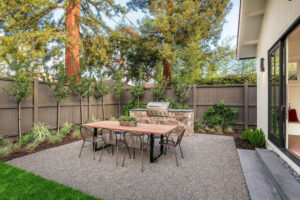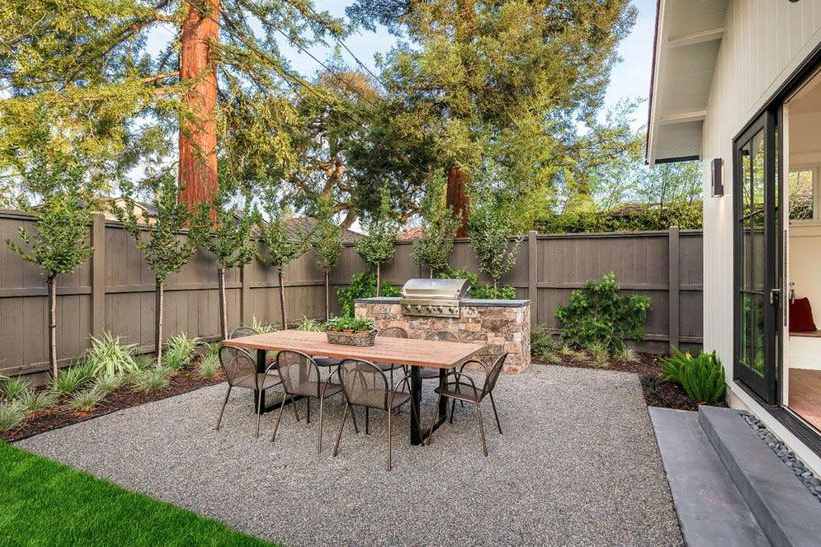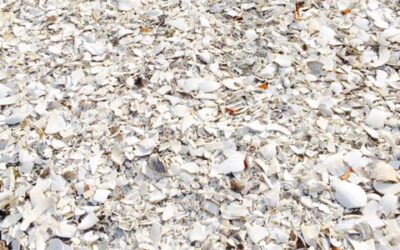 There are several compelling reasons to opt for gravel in your garden! From the satisfying crunch it produces underfoot to its cost-effectiveness compared to other hardscaping materials, gravel offers numerous benefits. Beyond its environmental advantages in preventing runoff and erosion, gravel enhances any landscape style with its variety of colors and sizes. It serves multiple functions, including improving gardens, flower beds, drainage systems, pathways, patios, and more. Here, we provide suggestions on how to start defining your project and gathering the essential elements to achieve your goals.
There are several compelling reasons to opt for gravel in your garden! From the satisfying crunch it produces underfoot to its cost-effectiveness compared to other hardscaping materials, gravel offers numerous benefits. Beyond its environmental advantages in preventing runoff and erosion, gravel enhances any landscape style with its variety of colors and sizes. It serves multiple functions, including improving gardens, flower beds, drainage systems, pathways, patios, and more. Here, we provide suggestions on how to start defining your project and gathering the essential elements to achieve your goals.
How Will You Use the Gravel?
Where do you want to use gravel and what will be its purpose? Is it a walkway? Some gravels (like pea gravel) “roll” underfoot, while others compact to form a more stable surface, making it easier to roll a stroller or wheelchair across a gravel patio. If you want to add stepping stones, options with either small particle sizes (like decomposed granite) or larger stones (like river rock) are less likely to travel up onto the pavers.
What’s Your Budget?
Gravel cost varies widely by type, size and availability. Often going with local gravel or one that’s widely available in your area can cut down on cost. Gravel, in general, is either sold by the bag (fill it yourself at a landscape supply store), in bulk by the cubic yard (roughly the amount to fill a standard pickup truck), or by the ton. One way to keep costs down is to use gravel and stone local to your region. You’ll save on the cost of trucking in gravel from another region and you’ll use a material that naturally occurs in your area, making a design feel more connected to the site.
Installing a Patio?
Are you mixing gravel with pavers, choose gravel that complements the stone and is made of a texture that will keep it in place. To reduce gravel traveling onto pavers, first install a layer of compacted base rock, then lay down a top layer of gravel and flagstones, positioning flagstones so they are slightly above the gravel. Adding a binding product (washed over the top) after installing the pathway can also help lock gravel in place.
Choose Complementary Colors
A foolproof way to pick a great landscaping stone color is to consider complementary colors. Complementary colors are any two colors opposite each other on the color wheel. For example, if your garden has a lot of purple in it, consider choosing a landscaping stone with more yellow in it. Use lighter tones to brighten a yard or cooler tints to make flowers stand out.
Consider Temperature
Dark black gravel tends to retain heat, while white rock and utility sand tend to reflect hot temperatures. Consider the amount of sun and shade in your outdoor landscape, and choose colors to help manage temperatures throughout the seasons.
Choosing the right material for your project can make a significant impact on the outcome. Carefully consider the characteristics of each material to ensure that you make the best decision for your project. Take some time to get a visual feel of the many ways to incorporate gravel into your outdoor world.
Request a Quote (859-635-5680) And We Will Contact You Shortly!
Calculate How Much Material You Need For Your Project
—
 About Bray Topsoil & Gravel
About Bray Topsoil & Gravel
Topsoil and gravel delivered to you by Bray Trucking, a specialized aggregate hauler servicing the Kentucky, Ohio, and Indiana region.
>>Learn More




